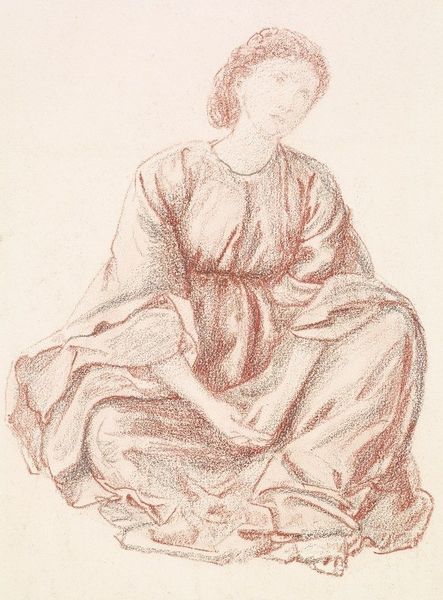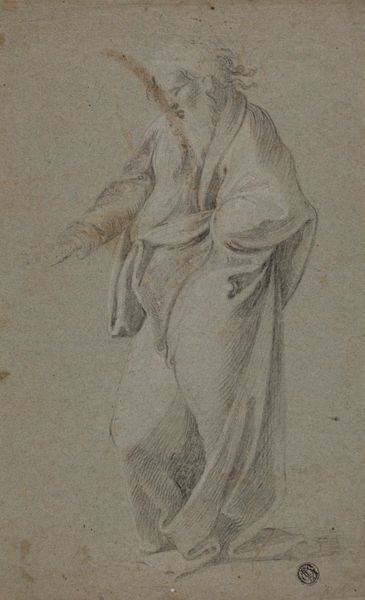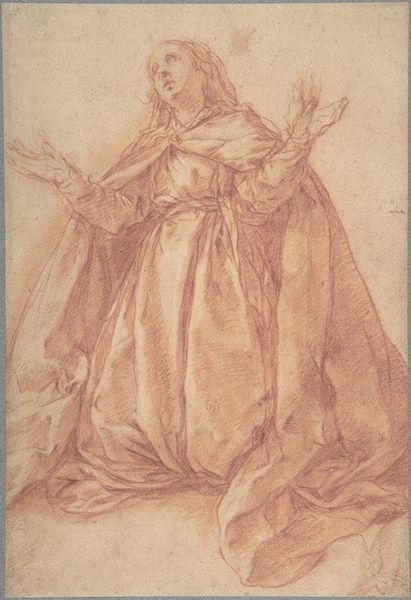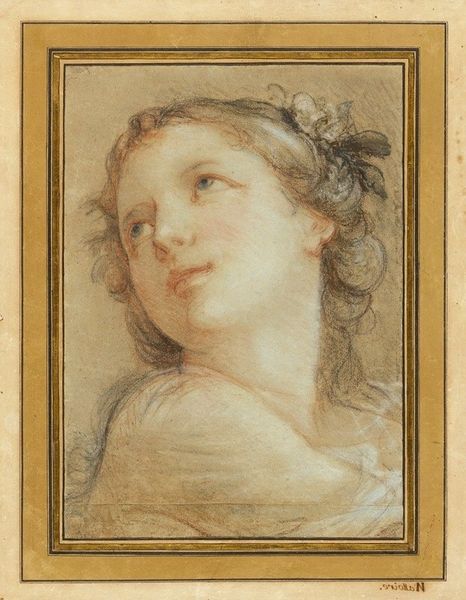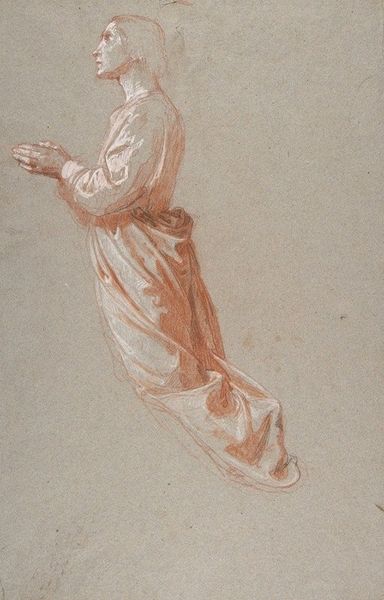
drawing, coloured-pencil
#
portrait
#
drawing
#
coloured-pencil
#
coloured pencil
#
history-painting
#
rococo
Copyright: Public Domain: Artvee
Curator: Jean-Antoine Watteau’s “Seated Woman,” created around 1716-1717 using coloured pencil, presents us with a intimate portrayal from the Rococo period. Editor: There’s a captivating immediacy to it. I’m struck by the apparent speed and efficiency of the lines. The medium and choice of colours seem deliberate, economical even, given the period. Curator: Indeed. Red chalk, or sanguine, was a favourite among French artists for its warm tonality. This drawing serves perhaps as a preparatory study, and that immediacy captures a candid moment, the woman's expression imbued with a fleeting emotion. Note the subtle blush in her cheeks rendered only by chalk. Editor: And what about her clothing? The drape of her dress seems less about depicting material wealth and more focused on volume and how light plays across the folds. You can see that Watteau focuses more on conveying form using economical material strokes than on the actual status of this noble figure. Curator: Certainly. And while not overt, we discern her status through details; the elegant neckline and carefully placed hands contribute to a feeling of controlled ease which was highly sought-after as a demeanor. Her posture is neither stiff nor casual, it sits precisely on the edge of graceful self-possession. She’s both present and reserved. Editor: It makes me wonder about the workshops of the time. Coloured pencil drawings like this suggest a degree of standardization, the result of apprenticeship and the division of labour inherent to the Rococo and its material process, or perhaps the growth of a new amateur class? Was art created by professional hands to sell ready-made to aristocratic figures to later claim as their own work and to flaunt a personal relationship with artistry? Curator: An intriguing perspective, as the rise of the art market coincides with shifts in societal roles during that era. While Watteau enjoyed the patronage of the elite, his exploration of human psychology – that melancholic and wistful tone for which his style stands out– makes one pause when reducing the artist to a figure blindly complying with standards. The woman embodies perhaps a more internalized reflection. Editor: That push and pull makes the piece compelling even now. It showcases the constraints and conventions but with a palpable human element shining through the economical means of making art accessible for later classes. It makes me feel there's a democratization in the artistic landscape right at its beginning. Curator: Indeed. Watteau captured something universally human within the gilded frame of his time, perhaps using ready-made art as a means for making psychological symbolism palatable. It's a beautiful reminder of art's power to connect us across centuries.
Comments
No comments
Be the first to comment and join the conversation on the ultimate creative platform.






